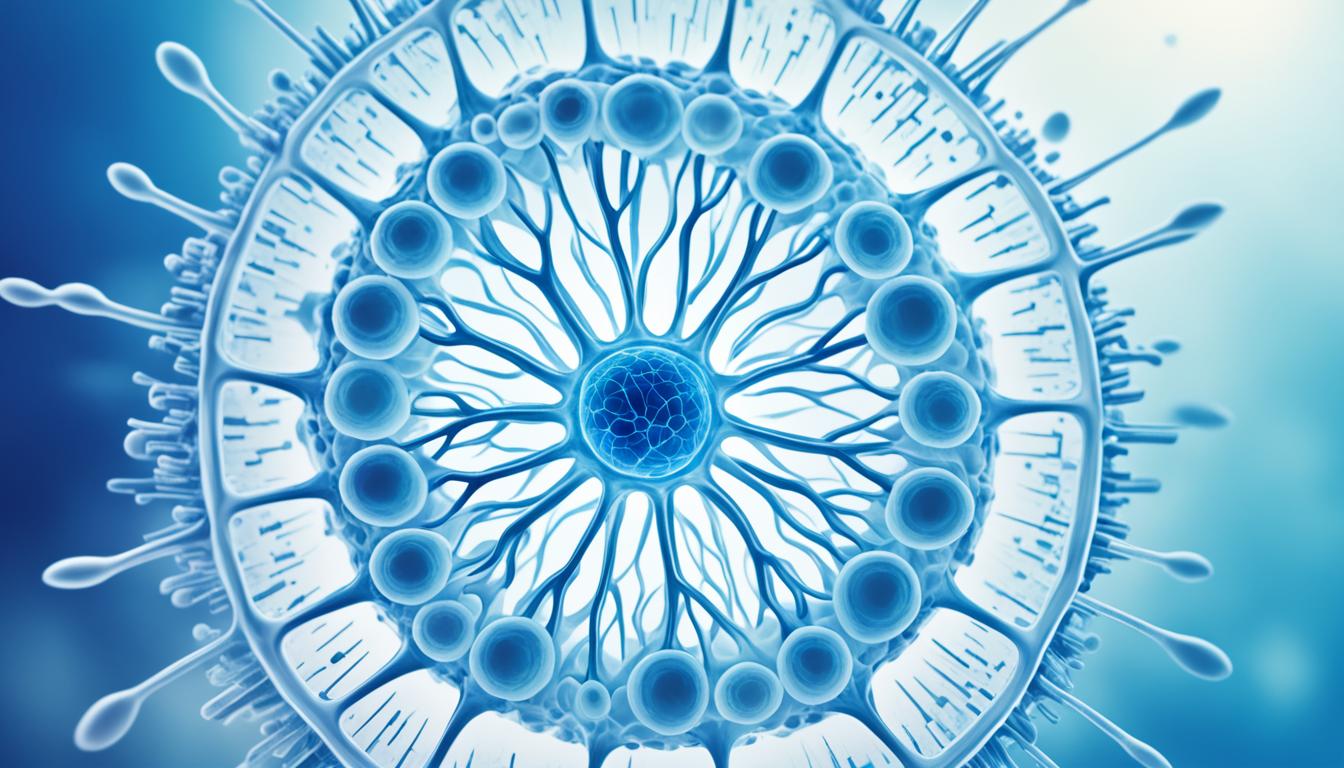Metachromatic leukodystrophy (MLD) is a rare hereditary disease. It causes fats called sulfatides to build up. This build-up hurts the protective layer on nerves. These nerves are part of our central and peripheral nervous systems. The disease is from a lack of an enzyme that breaks down sulfatides.
MLD shows up in three types, depending on when symptoms start. These are late-infantile MLD, juvenile MLD, and adult MLD. Each type has its own symptoms and gets worse at different rates.
Common signs of MLD include trouble talking, seizures, and problems walking. People might also see changes in someone’s personality. These issues can really lower a person’s quality of life.
The illness happens when a person has mutations in the ARSA gene. This gene tells the body how to make the arylsulfatase A enzyme. This enzyme usually breaks down sulfatides. Sometimes, problems with the PSAP gene can also cause MLD.
Because MLD is so rare, we’re not exactly sure how many people have it. Best guesses say it could be between 1 in 40,000 and 1 in 160,000 births.
Doctors diagnose MLD by looking at how symptoms get worse over time. They also do genetic and biochemical tests. This means checking for gene mutations and measuring certain substances. A special kind of MRI scan can show the damage in the brain linked to MLD.
There’s not much doctors can do to treat MLD yet. They focus on easing symptoms and making life better. Sometimes, they might think about using stem cell transplants. This could help replace bad cells with healthy ones that do the missing enzyme’s work.
Now, things are beginning to change for MLD treatment. The FDA has given the OK to atidarsagene autotemcel (Lenmeldy). It’s a gene therapy. It aims to swap out the faulty ARSA gene for a working one. This could slow the disease’s progress down.
Key Takeaways:
- Metachromatic leukodystrophy (MLD) is a rare hereditary disease characterized by the accumulation of sulfatides, leading to the destruction of the protective fatty layer surrounding nerves.
- MLD is classified into three subtypes: late-infantile, juvenile, and adult, each with different symptom onset and progression.
- The disease is caused by mutations in the ARSA and PSAP genes, resulting in an enzyme deficiency.
- Common symptoms of MLD include difficulty talking, seizures, difficulty walking, personality changes, and behavioral abnormalities.
- Diagnosis involves genetic and biochemical testing, including analyzing gene mutations and assessing sulfatase enzyme activity.
- Treatment options for MLD are limited, with supportive care and stem cell transplantation being considered in certain cases.
- Recently, gene therapy using atidarsagene autotemcel (Lenmeldy) has been approved for certain forms of MLD, offering new hope for patients.
Symptoms and Diagnosis
Metachromatic Leukodystrophy (MLD) symptoms can change based on disease type and when it starts. There are three types: late-infantile, juvenile, and adult.
Late-infantile MLD
The late-infantile kind is most common, showing signs by age 3. Kids might find it hard to walk, lose skills they had before, struggle to control muscles, have seizures, and see their thinking and moving slowly get worse.
Juvenile MLD
Juvenile MLD affects kids between 4 and the teen years. They may show poor behavior, have trouble in school, feel weak, have a hard time moving, and see their thinking abilities drop.
Adult MLD
Adult MLD starts later, worsening over years. Grown-ups might walk funny, shake, have trouble talking, lose memory, and their personality might change.
MLD makes both moving and thinking hard. It ends with losing the power to see, talk, or move.
To diagnose MLD, doctors look for its common pattern and do genetic and biochemical tests. They check for changes in ARSA and PSAP genes. They also test enzyme activity and sulfatide levels in pee.
Magnetic resonance imaging (MRI) helps too. It highlights brain myelin loss, typical in MLD. The MRI scans show the disease’s effects on the brain.
| MLD Subtype | Age of Onset | Common Symptoms |
|---|---|---|
| Late-infantile MLD | Within the first 3 years of life | Difficulty walking Developmental regression Loss of muscle control Seizures |
| Juvenile MLD | Between 4 years old and sexual maturity | Behavioral problems Difficulties in school Muscle weakness Difficulty with coordination |
| Adult MLD | Later onset, occurring over years to decades | Gait abnormalities Tremors Aphasia Memory loss Changes in personality |
Treatment and Advances in Stem Cell Therapy
Right now, Metachromatic leukodystrophy (MLD) has no cure. The main focus in treating MLD is to offer support. This includes care that helps ease the symptoms people face. If MLD is caught early or the signs are not severe, doctors might suggest stem cell transplant as part of the treatment. This process swaps the bad cells with healthy ones that can make the needed enzyme.
An amazing gene therapy, called atidarsagene autotemcel or Lenmeldy, has been approved by the U.S. FDA for some forms of MLD. This therapy works by putting in a new ARSA gene. This new gene then takes over where the old one failed, hoping to slow disease growth and improve life for those with MLD.
There’s also exciting progress in research and trials for MLD treatments. Scientists are looking at gene editing and other new treatments that focus on the disease’s root problems. With these medical advances, there’s hope for better treatments and maybe even a cure for MLD in the future.

